Assessment of the possible radiological impacts caused by wildfires around the Chernobyl Nuclear Power Plant, Ukraine
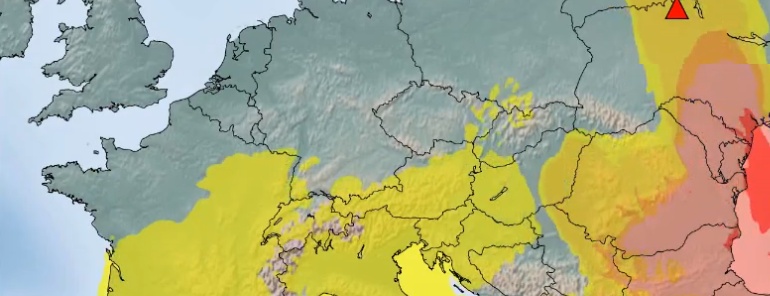
On April 15, 2020, French national public expert in nuclear and radiological risks — Institute for Radiological Protection and Nuclear Safety (IRSN) — issued a new information report which provides an assessment of the possible radiological impacts for the responders as well as for the inhabitants of capital Kiev, Ukraine during wildfires within the Chernobyl Exclusion Zone in early April 2020.
Wildfires broke out in Ukraine about ten days ago in a territory heavily contaminated by the 1986 Chernobyl nuclear accident, IRSN stated.
These fires reached the exclusion zone and the surrounding environment (about 1 km / 0.62 miles) of the nuclear power plant from April 8, 2020.
By Thursday, April 9, the police evacuated residents from the village of Poliske, which is located within the zone.
The image below shows a wildfire 6 km (3.7 miles) west of Pripyat and the Chernobyl Nuclear Power Plant on April 9.
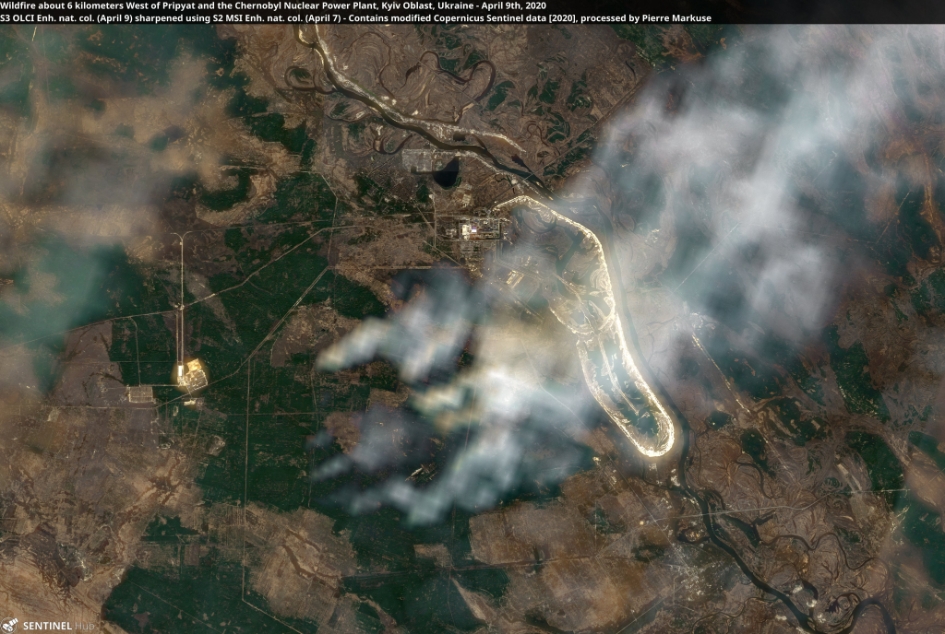
Image credit: Sentinel-2/Pierre Markuse, Acquired April 9, 2020.
On April 10, the fire was about 3 km (1.8 miles) south of the plant:
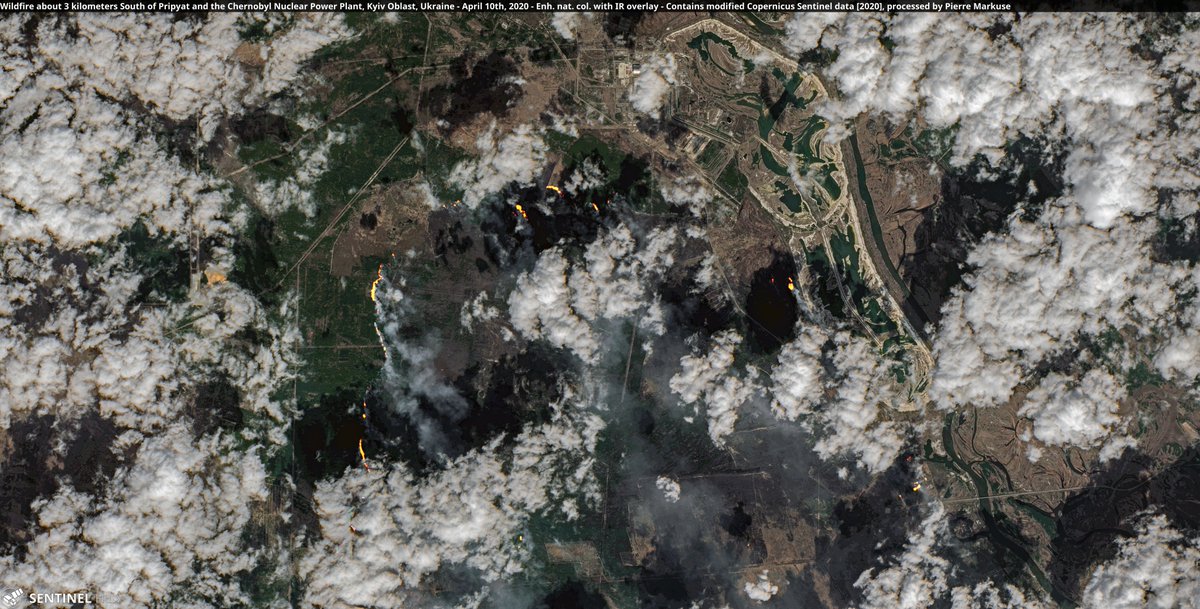
Image credit: Sentinel-2/Pierre Markuse, Acquired April 10, 2020.
On April 12, it was about 2 km (1.2 miles) south of the plant:
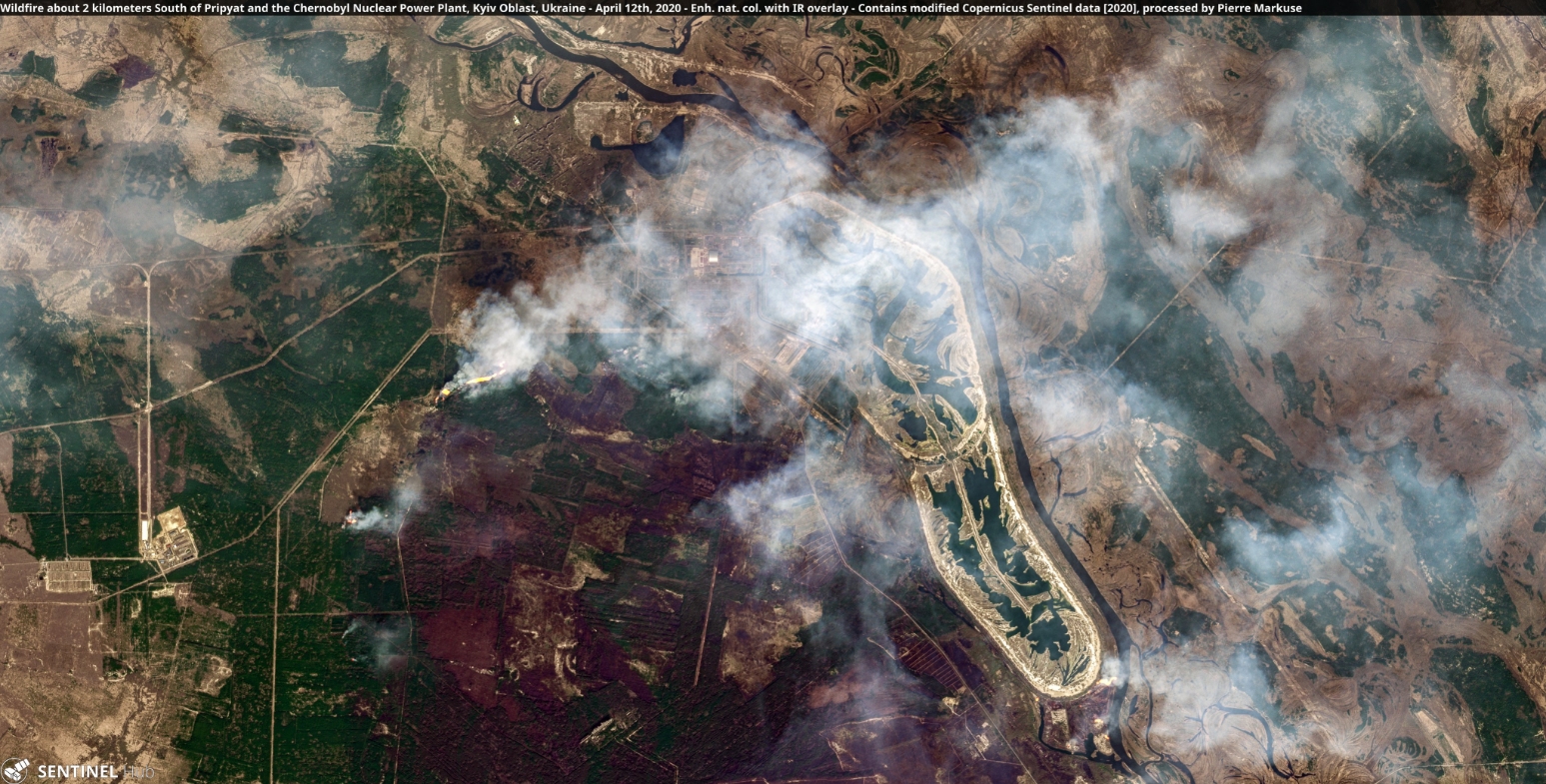
Image credit: Copernicus EU/Sentinel-2, Pierre Markuse. Acquired April 12, 2020.
Images below were acquired by Sentinel-2 on April 13. The situation was similar to the day before.

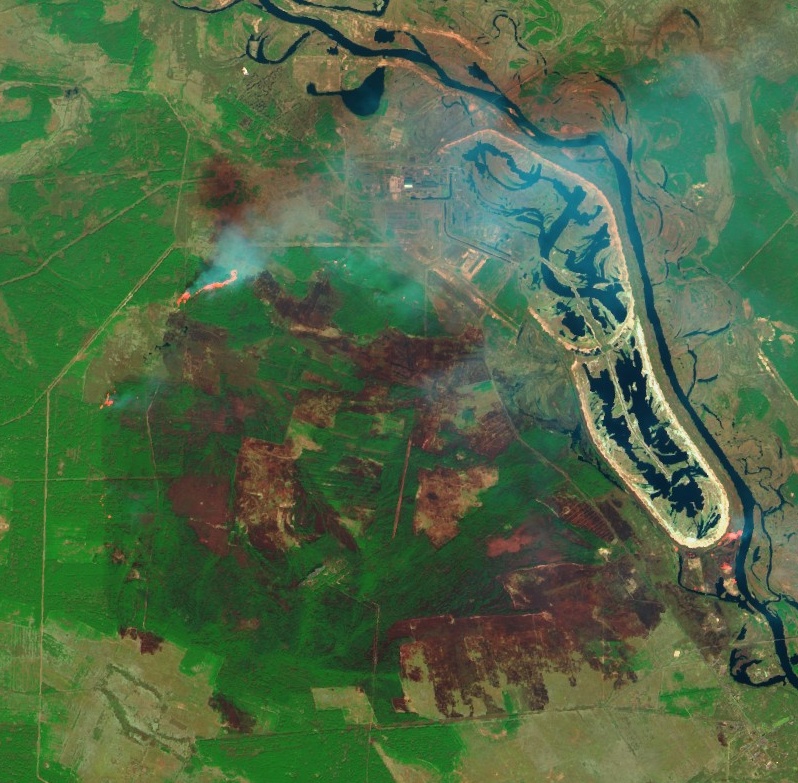
Image credit: Wildfires near the Chernobyl Nuclear Power Plant on April 13, 2020. Credit: Copernicus EU/Sentinel-3, TW
On Tuesday, April 14, Ukrainian authorities assured that the risks of fire spreading were now limited to isolated or smoldering fires. At the end of April 14, they indicated that the fires were under control.
The satellite images of April 15, 2020, showed no more fire spot in this part of heavily contaminated territories:
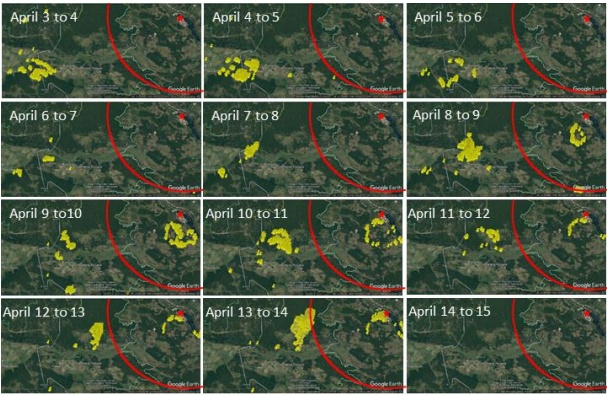
Daily maps of fire spots between April 3 and April 15, 2020. Location of the Chernobyl nuclear power plant is marked with a red star and the arc of a red circle delimits the exclusion zone with a radius of 30 km around the plant. Data source: NASA / FIRMS. Image courtesy IRSN
Measurements
Ambient gamma dose rate measurements near fire-affected areas, available at http://www.srp.ecocentre.kiev.ua/MEDO-PS/index.php?lang=ENG, do not reveal abnormal values.
However, it should be noted that these measurement devices are only capable of detecting major radiological accidents. "Such a probe is installed at the French Embassy in Kiev and is part of the IRSN's Téléray network deployed in France," the institute said.
"The radioactivity released into the atmosphere by the fires was therefore not high enough to be detected by these devices. On the other hand, much more sensitive measurements have been carried out by various Ukrainian scientific bodies that have published airborne 137Cs activities from aerosol samplings."
In Kiev, the highest airborne 137Cs activities in the air were recorded from April 9 to 11, 2020: 470 micro becquerel/cubic meter (µBq/m3) from April 9 to 10 ; 700 µBq/m3 from April 10 to 11. A value of 1,200 µBq/m3 during the night of April 4 to 5, 2020 has also been reported by the Scientific State and Technical Center for Nuclear and Radiological Safety in Ukraine but has not been confirmed.
These values are significantly higher than the values usually measured for cesium 137 in the air in Kiev and show evidence of the passage of contaminated air masses. However, they remain moderate and have no health consequences, IRSN said.
In the Chernobyl exclusion zone, much greater air contamination is observed due to the closeness to the measuring devices in the burned area. The institute carried out an estimation of the dosimetric impact of the fires according to different scenarios. The results showed that for a fire-fighter who worked for 100 hours in the exclusion zone in an environment with an airborne activity level of 1 Bq/m3 (or 1,000,000 µBq/m3 ) of cesium 137 and 1 Bq/m3 of strontium 90 (a major assumption compared to the measurements carried out in the area), the calculated dose corresponding to the inhalation of radioactive fire smokes is approximately 13 micro sievert (µSv).
It should be noted that this dose is much lower than that which results from the external exposure of fire-fighters by the radiation emitted by the contaminated soil and which, in the exclusion zone, is very often greater than 1 µSv/h. This is consistent with estimates made by Ukrainian scientists which indicate that the doses received by fire-fighters as a result of smoke inhalation are in the range of 1% of the dose induced from the exposure to ground radiation.
For a resident of Kiev exposed for a few days to radioactivity levels comparable to those measured by Ukrainian organizations in Kiev, the inhalation dose received by an adult is less than 1 nano sievert (1 nSv = 0.001 µSv) which is extremely weak. For more information about the Dosimetric impact, see Chapter 4 of the report.
Modelization
IRSN has also performed a modeling estimation of the amount of radioactivity re-emitted by fires. This would be around 200 GBq issued between April 3, 2020 at 10:00 UTC and April 13, 2020 at 10:00 UTC.

Modeling of the plume dispersion over Europe. Red triangles represent the fire locations of the fires and the blue dots the measurement stations in Ukraine). Image courtesy IRSN
The simulations carried out show a good agreement between measurements provided by the Ukrainians and modeling results. On this basis, IRSN simulations indicate that air masses from the area of the fires that occurred on April 5 and 6 were able to reach France in the evening of April 7, 2020.
As of April 14, these air masses still covered half of the territory. Expected radioactivity levels in France are extremely low, below 1 µBq/m3 in 137Cs.
The releases occurring between April 9 and April 11, 2020 are more significant according to the modeling.
The weather conditions that prevailed until April 14 favored the transport of air masses to Belarus, southern Ukraine, eastern Romania and Bulgaria, but they have not reached France, as of April 15.

For the full IRSN information report, please visit:
"Information note – Fires in Ukraine in the exclusion zone around the Chernobyl power plant" published by IRSN on April 15, 2020. (irsn.fr)
Featured image credit: IRSN

Caesium-137 has a half-life of about 30.17 years. About 94.6% decays by beta emission to a metastable nuclear isomer of barium: barium-137m (137mBa, Ba-137m). The remainder directly populates the ground state of barium-137, which is stable.